" Whilst scouring the web for images of Americana, I came across these amazing pictures of Graham hill-driven Turbine Indy car from around 1968 in the Life Photo Archive. In the race to produce an alternative to the internally combusted, piston-and-crankshaft model "

Gas turbine cars: an ill wind?
When people talk about a 'jet car', they're usually referring to one that's powered by a gas turbine engine.
The vast majority of cars on our roads are powered by piston-engined internal combustion engines. A gas turbine, however, has no pistons.
Instead, air is compressed and fed into a combustion chamber, into which fuel is sprayed. The fuel/air mixture is then ignited and the gases produced are used to power a turbine. Generally speaking, the power produced by this turbine is used to run the compressor that pressurises the air fed into the combustion chamber rather than also being used for propulsion. The exhaust gases then pass through a second turbine (known as a ‘free turbine’) attached to a shaft, thereby creating the mechanical power used for propulsion.
Gas turbine engines tend to be lighter and have better power to weight ratios than piston engines, as well as being able to use a variety of fuels. So it’s no surprise that the idea of using a gas turbine to power a car has been around for a long time. A very long time, in fact: a patent for what was in essence the first gas turbine engine, intended to power a horseless carriage, was granted to an Englishman, John Barber, in 1791.
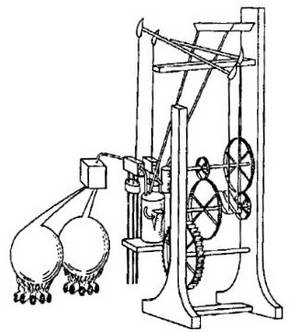
Unfortunately, Barber’s engine was unable to produce sufficient power to be viable, and over a century would pass before a Norwegian engineer, Aegidus Elling, built the first gas turbine that produced more power than was needed to power its own components. And it would take almost another 50 years before a car powered by a gas turbine engine would see the light of day.
In May 1946, an article in Popular Science magazine revealed that Robert Kafka and Robert Engerstein, engineers with New York-based Carney Associates, had designed a compact gas turbine engine for automotive use. Although the proposed engine was claimed to be both powerful (100bhp) and economical (40 miles per gallon), it never saw the light of day.
Kafka and Engerstein were not, however, the only engineers eyeing the possibility of using gas turbines as a means of automotive propulsion.
As the United Kingdom had, by virtue of the pioneering work of Frank Whittle, established an early pre-eminence in the design and use of gas turbines to power aircraft, it was perhaps natural that a British company should be the first to produce a car powered by a gas turbine engine.
That company was Rover.
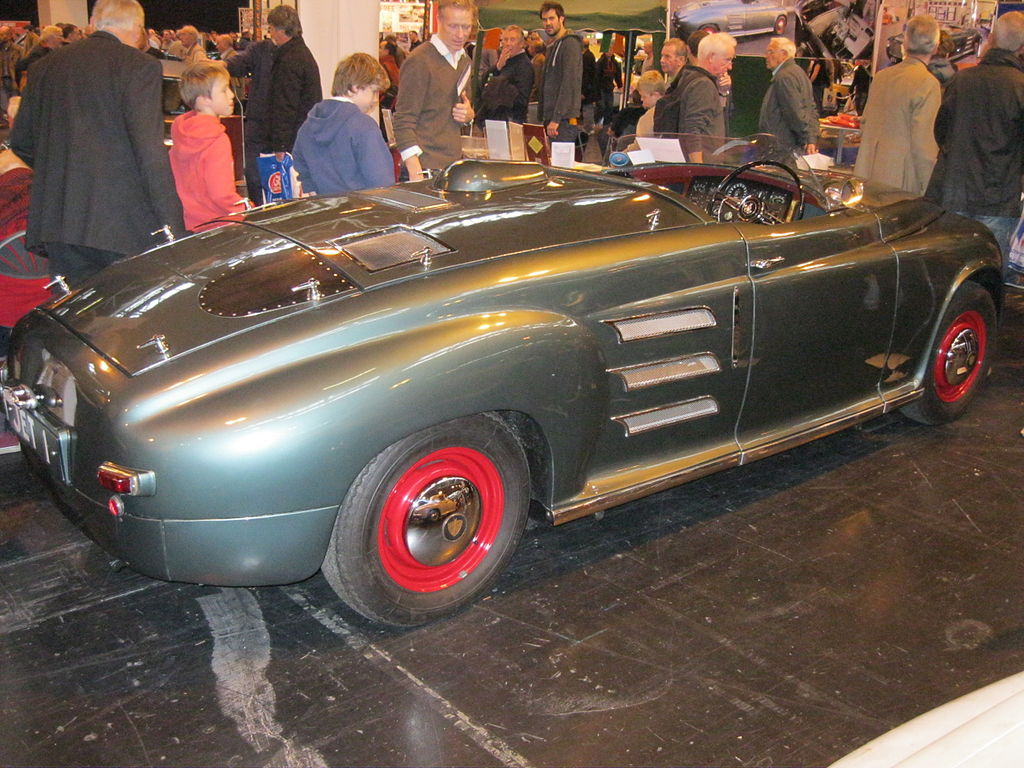
Having worked in partnership with Power Jets, Frank Whittle’s company, on jet engines during the late 1930s and early 1940s, Rover was well placed to adapt gas turbine technology for road use. In 1950, the company unveiled JET 1, an open-top two-seater based on a heavily modified Rover P4 platform. Power was supplied by a rear-mounted turbine which drove the rear wheels. In its initial guise, the JET 1’s turbine delivered 100bhp, sufficient to enable it to reach 60mph from rest in around 14 seconds and go on to a top speed of just under 90mph. But if its performance was respectable, its fuel consumption of 6 miles per gallon was anything but.
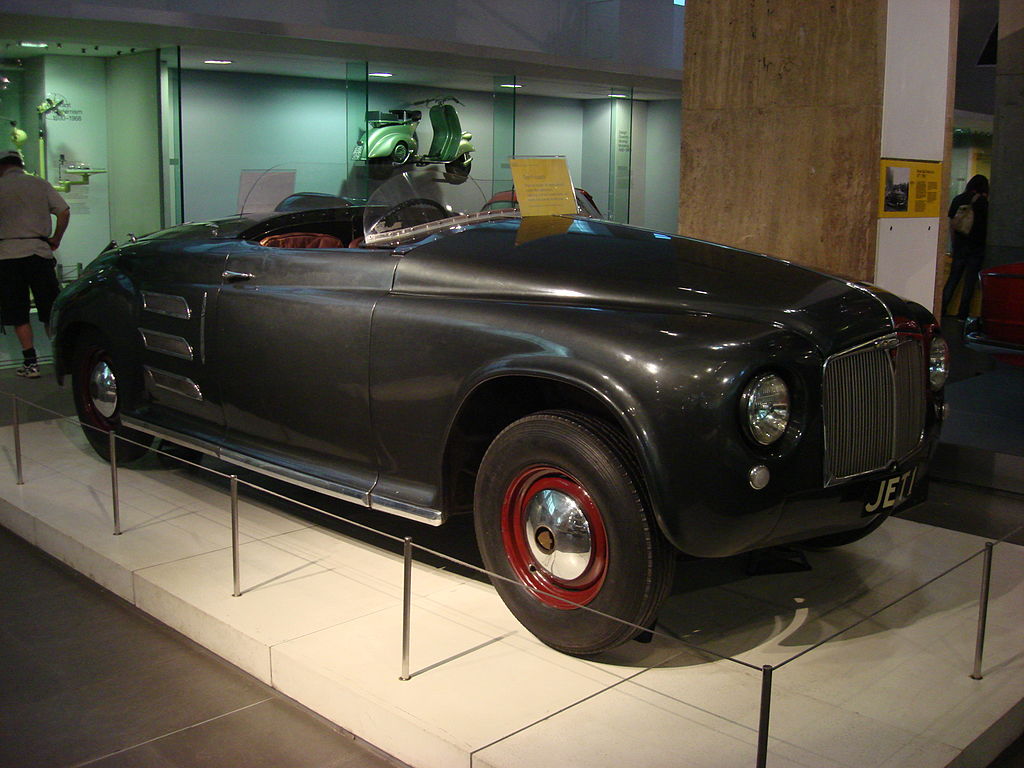
Development work on JET 1 saw it receive both a hike in power (to 230 bhp) and a more slippery nose. These upgrades were put to the test in 1952, when it achieved a measured 152mph over the flying kilometre at Jabbeke in Belgium.
Creating a prototype was one thing, but developing a gas turbine car for production was a rather more thorny issue. Nonetheless, Rover continued to develop gas turbine road cars into the 1960s, but work on gas turbine-powered cars ended following Rover’s absorption into Leyland Motor Corporation in 1967, leaving the the attractive P6-based, front-wheel-drive T4 of 1961 as the nearest thing that the company came to producing a viable production car.
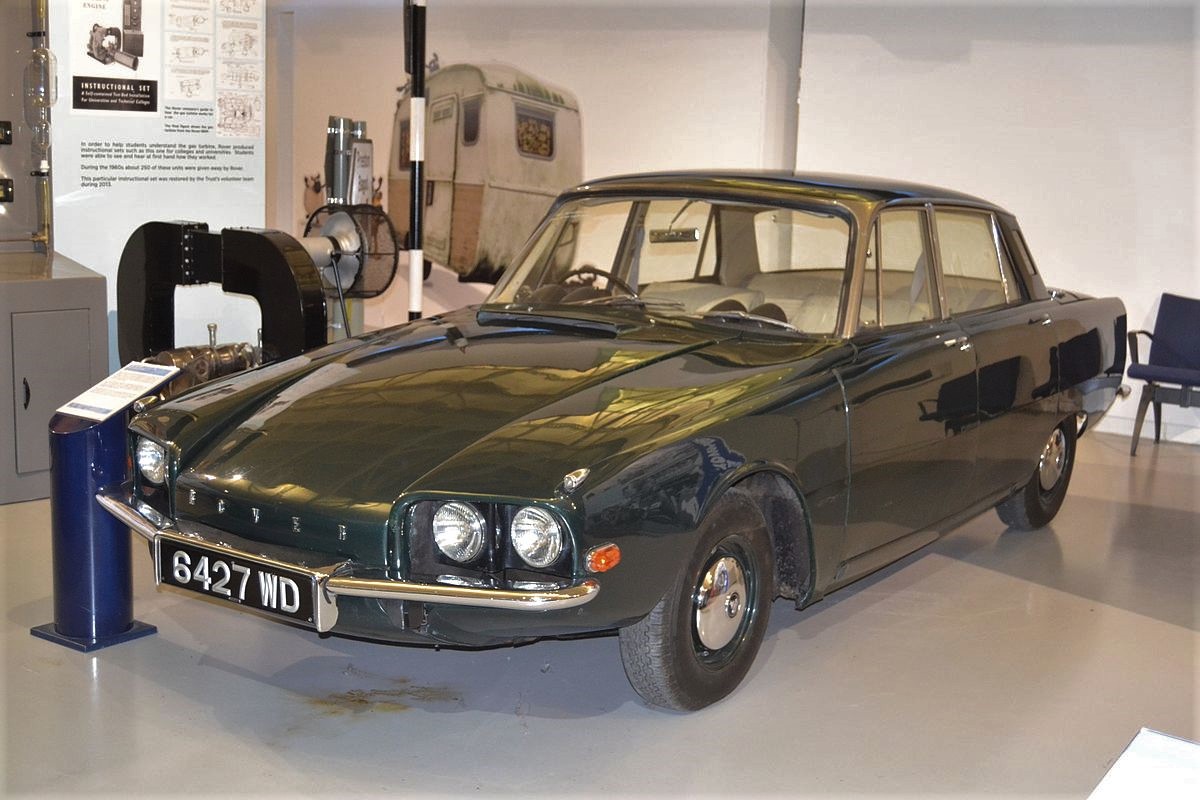
On the other side of the Atlantic, General Motors was the first manufacturer to produce a gas turbine-powered car, the XP-21 (later renamed Firebird 1). First shown in 1953, the single seat XP-21, which looked like a jet fighter on wheels, was the first of a series of three gas turbine-powered concept cars which culminated in the Firebird III of 1959 (the later Firebird IV was a non-runner). The Firebird series was, however, more of a showcase for both space-age design and new technology, such as anti-lock brakes, cruise control, all-round disc brakes and titanium construction, rather than a serious study into the production use of gas turbine engines.

Chrysler, on the other hand, took gas turbine engines very seriously, having started to conduct research into the automotive use of such engines before world war 2. Work on the project resumed after the war ended, but it wasn’t until 1954 that the company’s first gas turbine car was unveiled. Based on a Plymouth Belvedere saloon, the car (known internally as the CR1) was fitted with an engine that delivered 100bhp whilst also being some 200 pounds lighter than a comparable Plymouth six-cylinder engine.
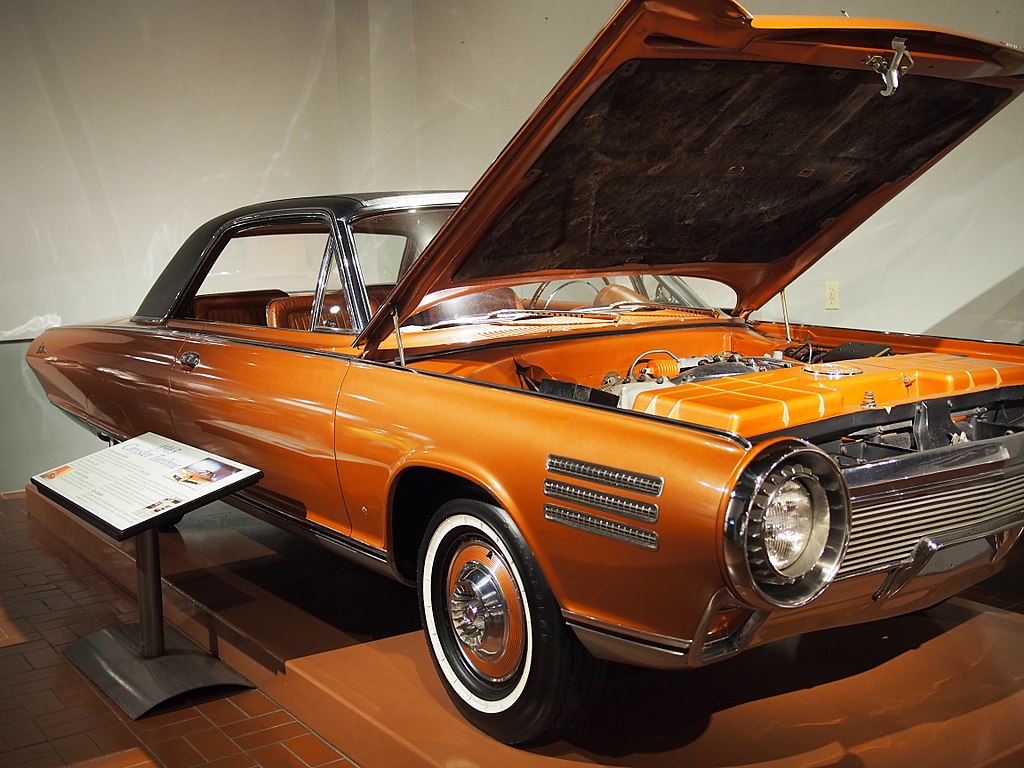
Two years later, a gas turbine-powered Plymouth saloon embarked on a journey from New York to Los Angeles, a distance of slightly over 3000 miles. A few technical hitches were encountered but the Plymouth made it to Los Angeles four days after its departure. Though a success in many respects, the trip highlighted one of the main problems with gas turbine engines, their thirst. Running on both unleaded petrol and diesel (Chrysler claimed it could run on anything from peanut oil to Chanel No. 5), the Plymouth averaged 13 miles per gallon for the trip.
But fuel economy wasn’t the only issue with gas turbine engines: the exhaust generated a lot of heat, the engine lacked flexibility, throttle response was poor and there was no engine braking. Moreover, although emissions from gas turbine engines were generally low, they emitted a lot of nitrogen oxide.
Chrysler, like Rover, worked hard to overcome these issues, and in 1962 they announced that a small number of gas turbine-powered cars would be made available to members of the public for real-world testing and appraisal. And they were as good as their word: between 1964 and 1966, fifty Ghia-styled Chrysler Turbine cars were loaned to members of the public for three months at a time. In all, over 200 people drove over 1 million miles in the Turbine Cars before the project ended in 1966. Most of the Turbine Cars were then crushed.
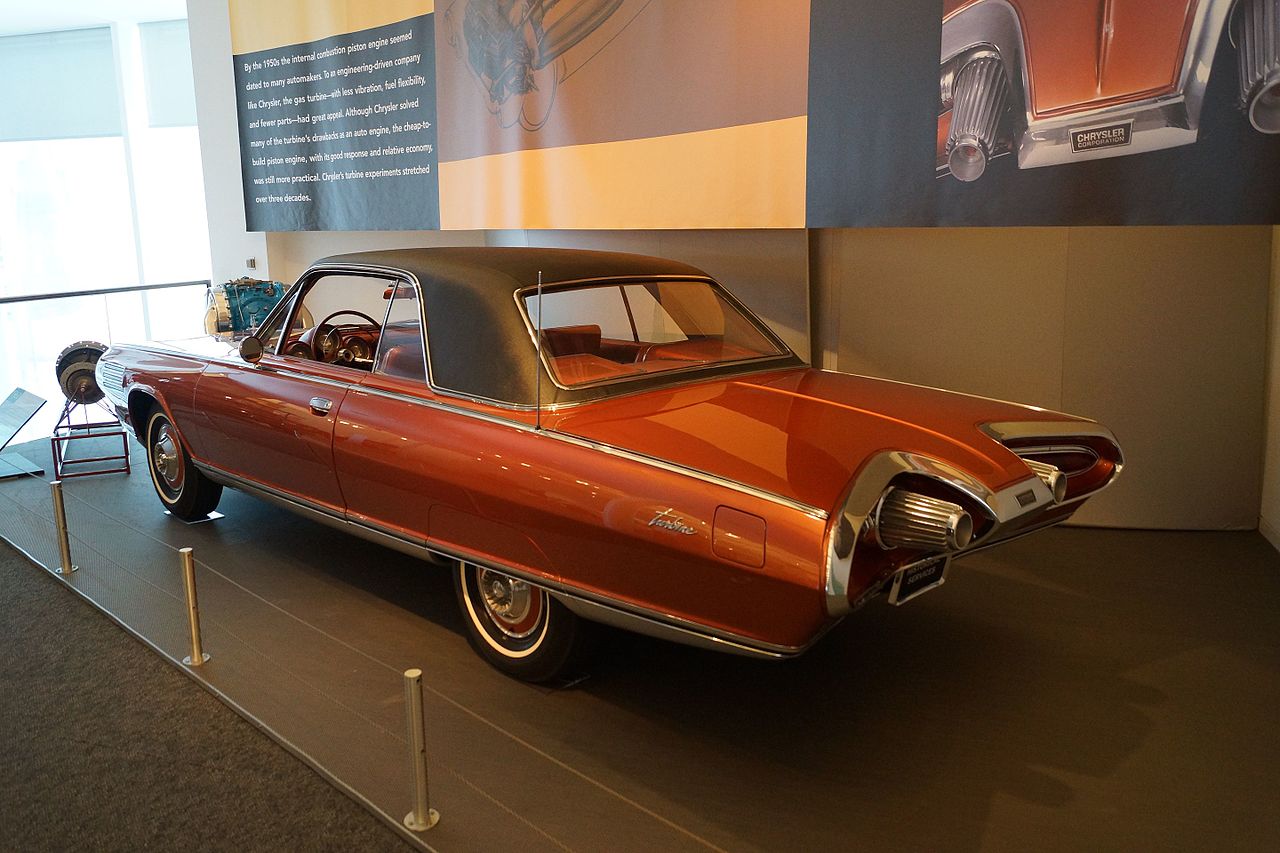
Although Chrysler continued to work on roadgoing gas turbine engines until the late 1970s, the Turbine Car project remains the closest that any manufacturer has come to a production gas turbine-powered car.
Although not ideally suited to motorsport, especially the stop-start nature of road courses, gas turbine-powered cars competed at Le Mans, Indianapolis and even (briefly) in Formula 1.
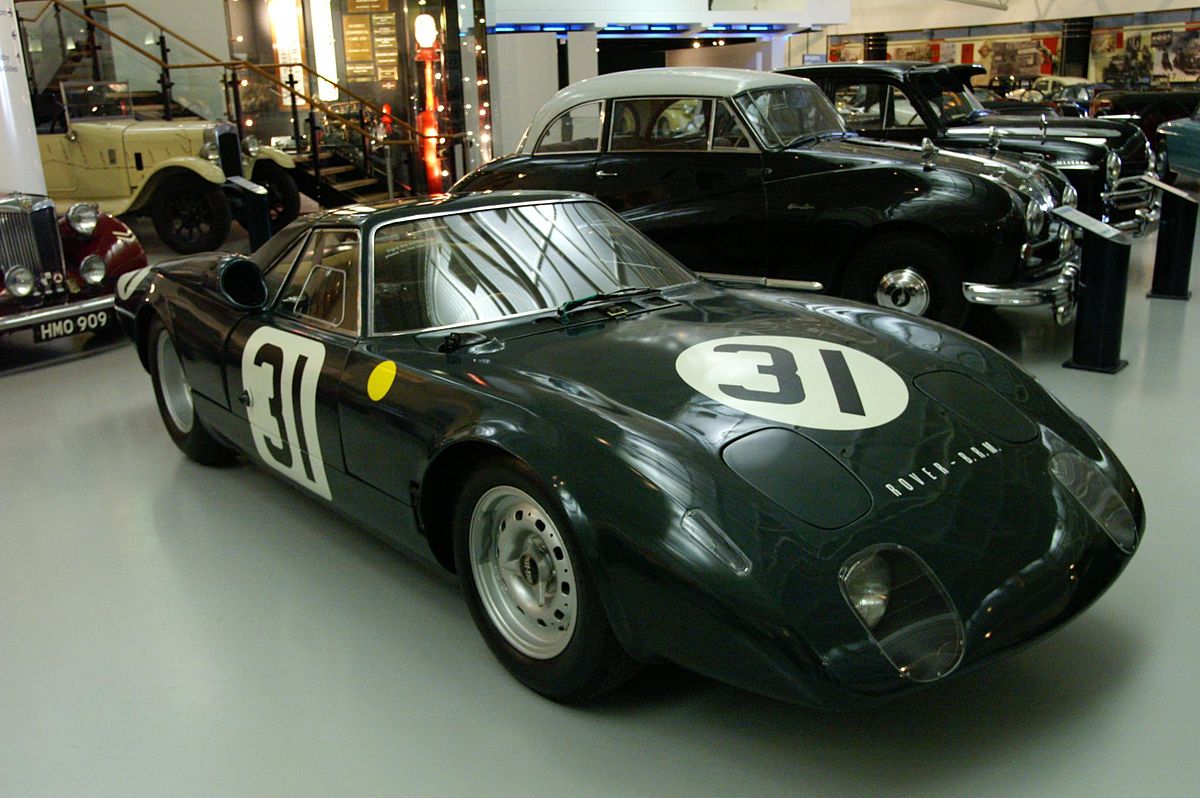
Rover again led the way. In partnership with BRM, they produced a sports-racer that competed at Le Mans on two occasions.
Based on a BRM Formula One chassis (one that had been driven – and crashed – by Richie Ginther in the 1962 Monaco Grand Prix), the Rover-BRM featured a mid-mounted gas turbine with an output of 150bhp.
Rover was permitted to enter the car in the 1963 Le Mans 24 Hours as an experimental vehicle, and drivers Richie Ginther and Graham Hill (the reigning F1 world champion) drove it to what would have been an eighth place finish if the regulations had permitted it to be classified.
A delighted Rover entered the car for the 1964 race, but an off-track accident meant that it was unable to take part. Rover did, however, return to the Sarthe in 1965, when the car – no longer classed as experimental and now featuring new coupé bodywork (penned by William Towns) and with ceramic rotary heat regenerators (which greatly improved engine efficiency at the cost of a little power) – finished in tenth place in spite of sustaining turbine damage in the early stages of the race.
The 1965 Le Mans was the Rover-BRMs last race, but it would not be the last gas turbine car to compete at the Sarthe, for in 1968 a new challenger entered the fray: the Howmet TX. Designed and built in the USA, the TX used a Continental gas-turbine engine that had originally been developed for use in a military helicopter. And with 350bhp at its disposal, the TX was better equipped to challenge for outright race honours than the smaller-engined Rover-BRM.
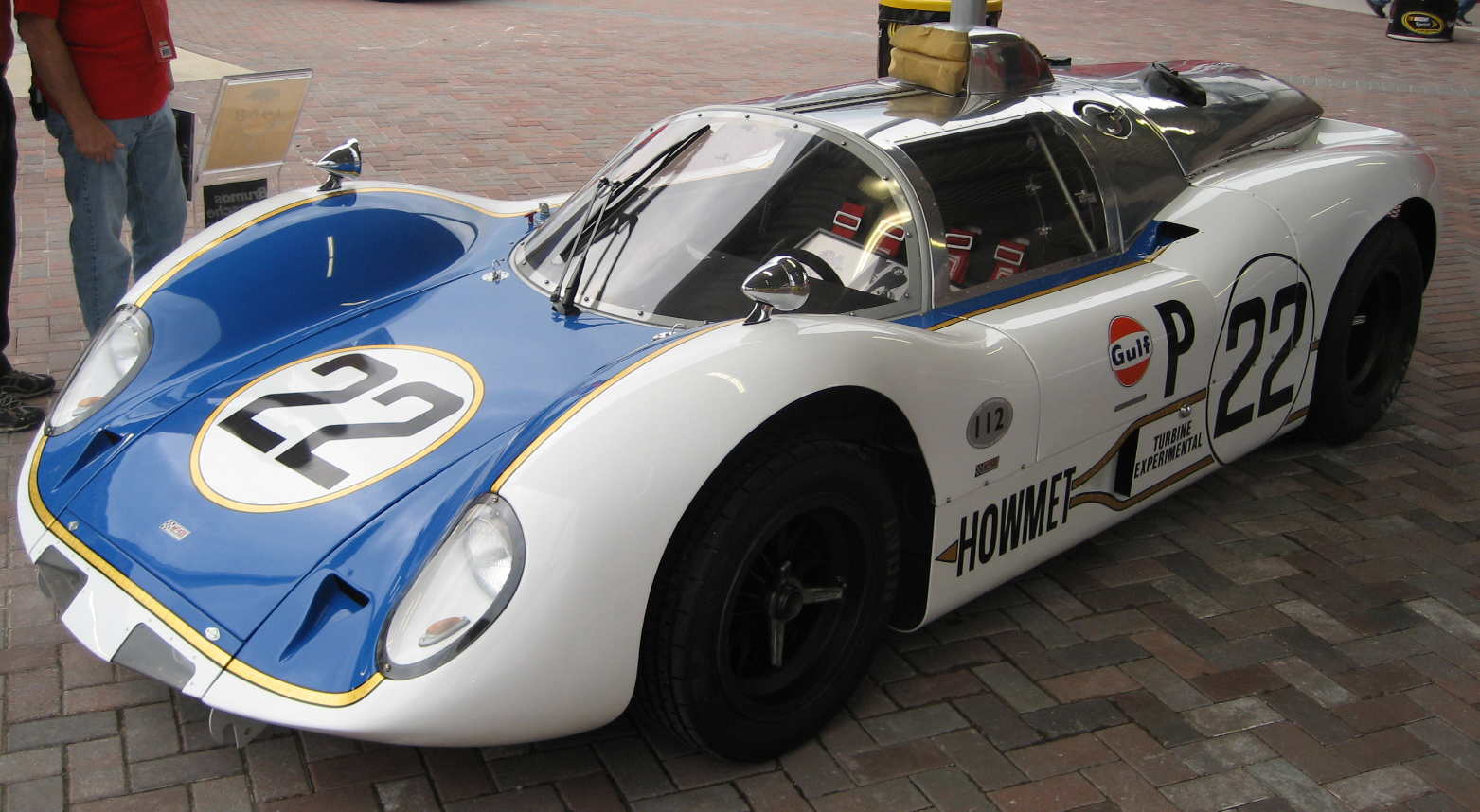
The TX made its debut at the Daytona 24 hours, where it qualified an impressive seventh. It ran as high as third in the race but a stuck wastegate led to a race-ending crash. It went better still at Sebring, qualifying third, but again failed to finish.
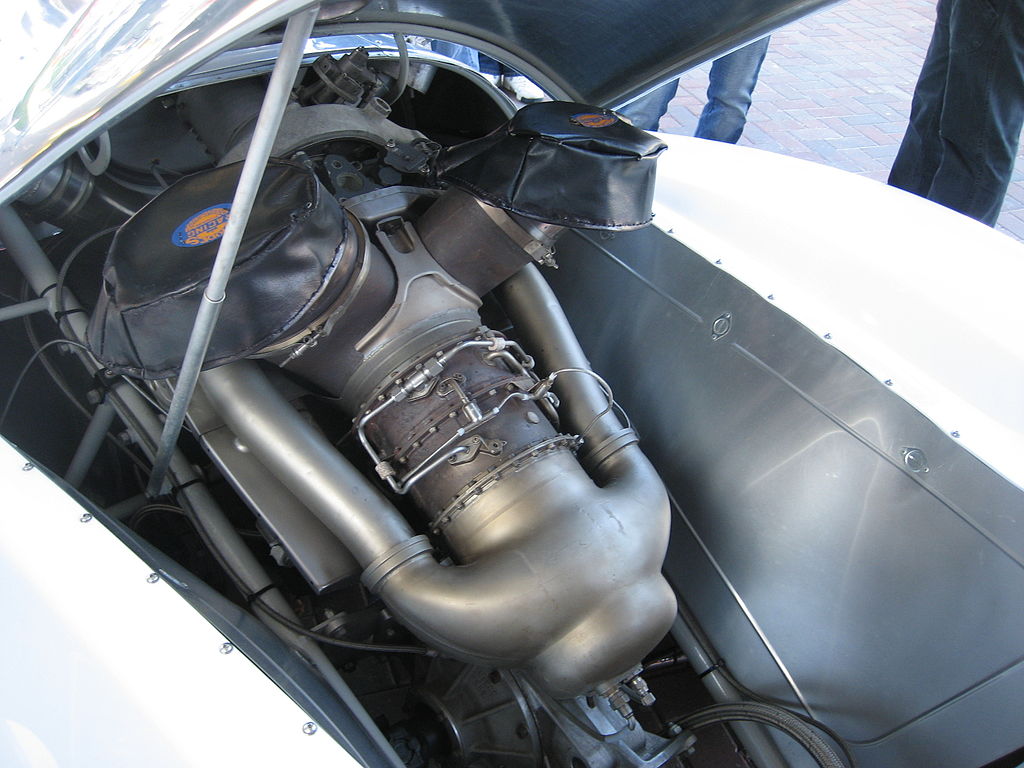
The TX then made its first trip to Europe, where it ran in both the BOAC 500 at Brands Hatch and a one-hour race at Oulton Park. Having retired from both events, the TX returned Stateside and competed in the SCCA championship, where it not only finished a race for the first time but took outright victory at two events. It also ran well in the Watkins Glen 6 Hours, finishing third and winning its class. A foray to Le Mans proved less successful, however, with the car’s relative lack of power putting at a significant disadvantage down the three-mile long Mulsanne straight. Neither of the two TXs entered finished the race, but even so it had shown well over the course of the season.
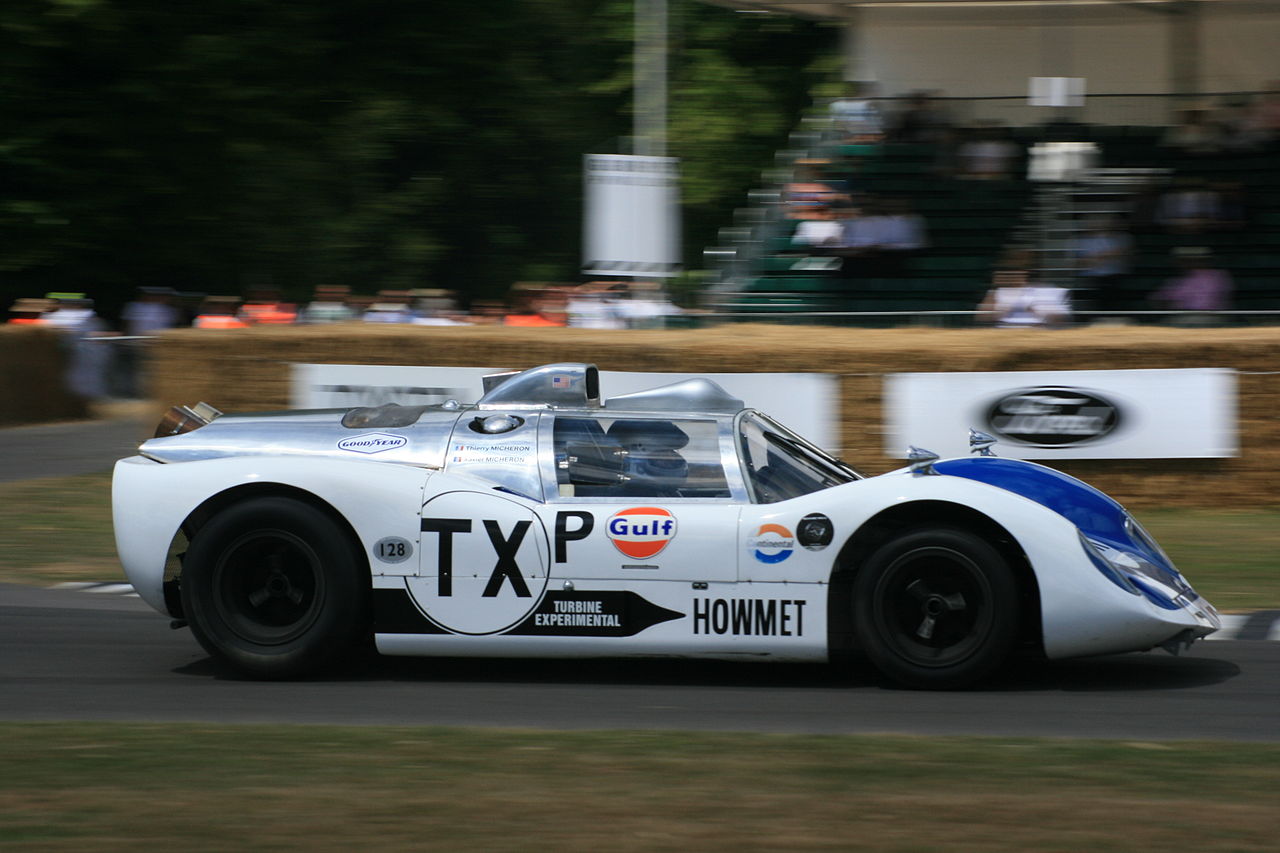
Unfortunately, 1968 was to be the TX’s only season and it never raced again in period, although it did go on to set a number of world speed records for gas turbine-powered cars.
A year before the Howmet TX took to the tracks, Parnelli Jones became the first man to race a gas turbine-powered car in the Indianapolis 500. The car driven by Jones was the STP Paxton, a curious looking machine (in which the engine sat alongside the driver) designed by Ken Wallis and Andy Granatelli, the CEO of STP motor oils. The Paxton may have looked a little odd, but it was fast: having qualified sixth, Jones led the race for 171 laps and was within three laps of taking a comfortable victory when a transmission bearing failed.
For the 1968 running of the race, Granatelli’s STP outfit joined forces with Lotus in order to campaign the new Maurice Philippe designed Lotus 56. Although rear-engined, the wedge-shaped, four-wheel-drive 56 was, like the Paxton, an eye-catching vehicle. And more importantly, it was quick.
Although new race regulations had reduced the power of gas turbine-powered cars, the 56s of Joe Leonard and Graham Hill took the top two positions in qualifying. They went well in the race too, with Leonard looking likely to take victory until, like Jones the previous year, a mechanical issue forced his retirement with under ten laps left to run.

After further regulation changes effectively ended the gas turbine’s career in Indycar racing, Lotus redeveloped the type 56 into a Formula 1 car, the 56B.
In truth, the 56B wasn’t well suited to Formula One. In addition to the extra weight of its four-wheel-drive system, its thirst meant that it had to carry to more fuel than its piston-engined rivals. And that, coupled with the gas turbine’s poor flexibility and throttle response, meant that it was uncompetitive. Even so, Lotus entered the 56B in three world championship Grands Prix in 1971. It never qualified higher than 18th and finished just once, when Emerson Fittipaldi took it to a lapped 8th place at Monza.
The 56B did at least get to end its career on a relatively high note, when Fittipaldi drove it to second place in a Formula 5000 race at Hockenheim in Germany.
And that, in so far as top-level gas-turbine powered racers were concerned, was pretty much that.
But if the automotive use of gas turbine engines didn’t meet the aspirations of its proponents, it should not be regarded as a failure, for it may yet enjoy a second coming, albeit in scaled down form.
As the automotive industry looks for ways to make cars more fuel efficient, electric vehicles will become an increasingly common sight on our roads. But with battery life still something of an issue, pairing an electric motor with a compact, range-extending internal combustion engine makes sense.
And it’s as a range-extender that the turbine engine, smooth and light and now with much-improved fuel efficiency, might finally find its place in the sun.
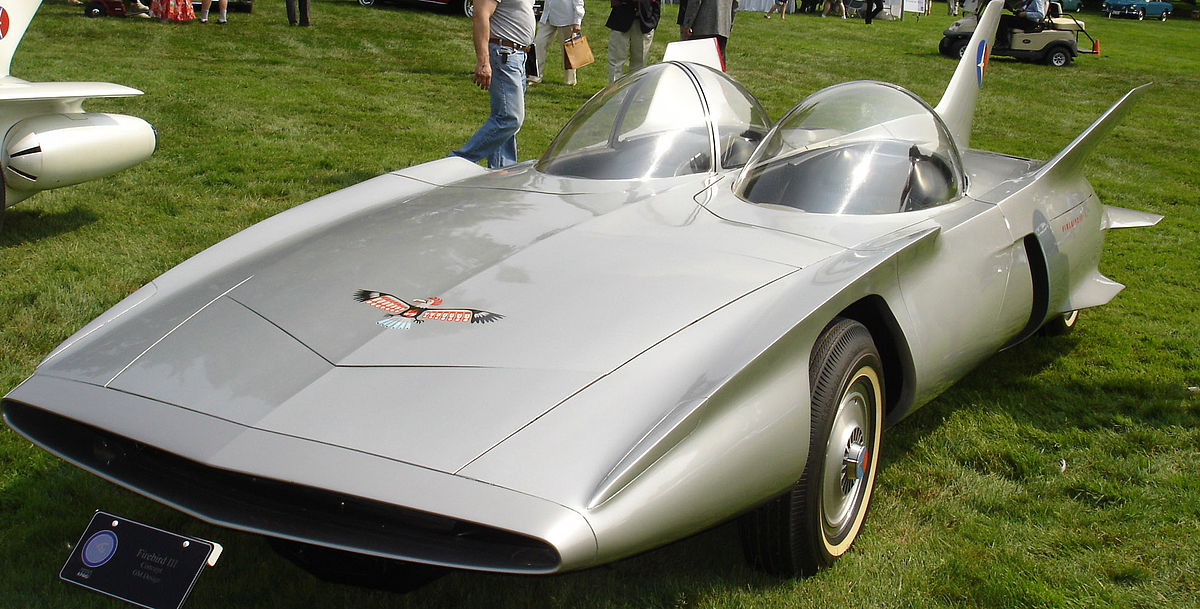
CLICK TO ENLARGE










A few small nuggets of information to add to the main piece:
The Rover T4 may have (mostly) shared the P6’s styling, but it appeared two years ahead of the P6.
Leyland, into which Rover was subsumed in 1967, was also interested in gas turbine propulsion and produced a prototype gas turbine-powered truck in 1968. Later on, Leyland gas turbines (ten of them…) were used to power the prototype of British Rail’s Advanced Passenger Train, known as the APT-E.
A request by the President of Mexico led to the Chrysler Turbine Car being ran with tequila as a fuel. It worked!
Jim Clark tested the Lotus 56 at Indianapolis in March, 1968, and would have raced it in that year’s ‘500’ had he not perished in a Formula 2 race at Hockenheim that April. He was replaced by former Lotus Grand Prix driver Mike Spence. On 7th May, 1968, exactly one month to the day after Clark’s death, Spence was killed at the wheel of a Lotus 56 during a practice session at Indianapolis.
Jet engined vehicles, which use jet thrust for propulsion (rather than driving the vehicle’s wheels via a turboshaft), have enjoyed considerable success in the drag racing world, as well as setting a number of outright land speed records.
And finally, many of the cars mentioned in this article (and the APT-E) still exist. And some, such as the Rover-BRM and Howmet TX, still run from time to time.